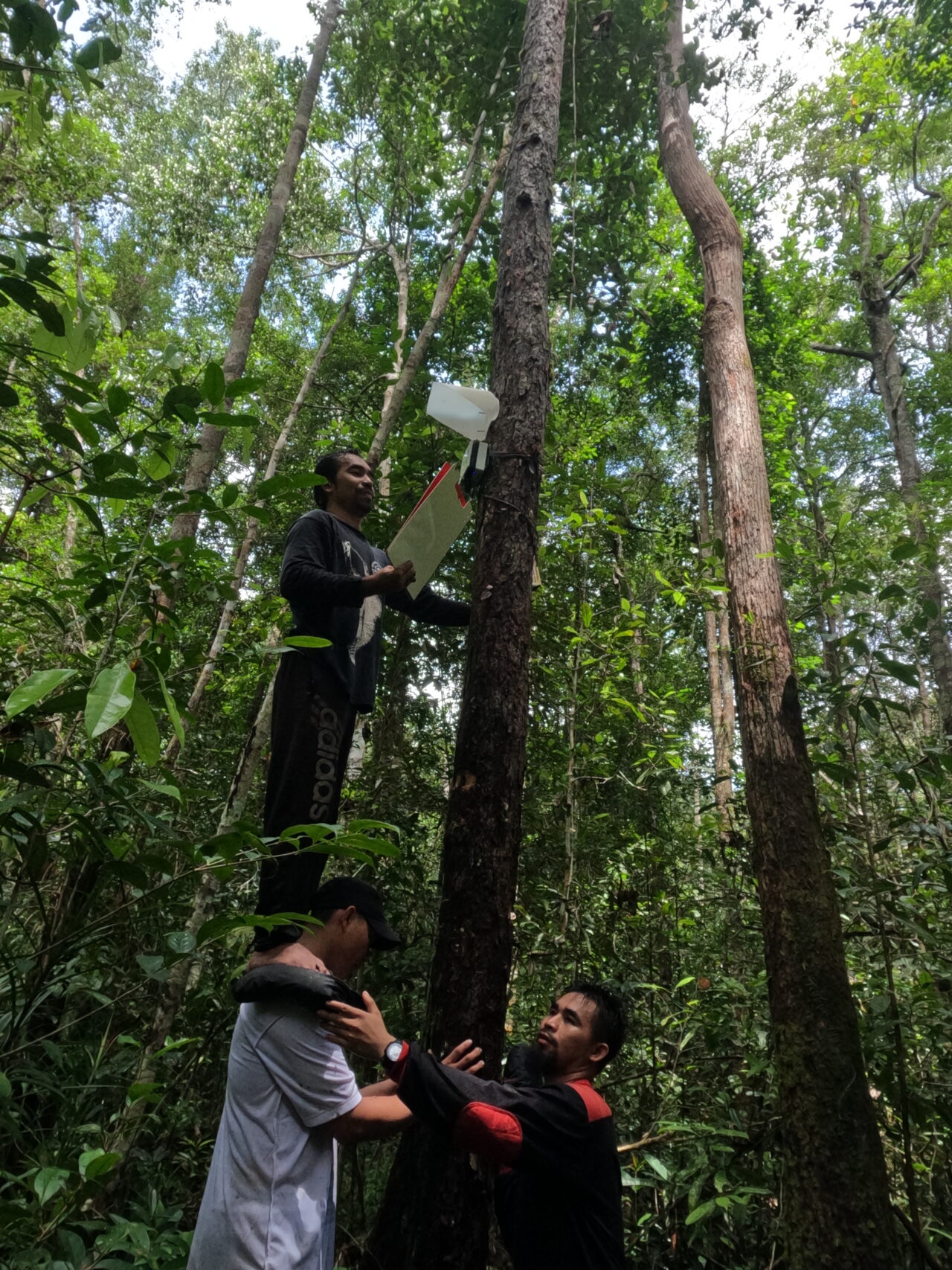Exploring the Peat Swamp Forest to Install Recorders
By Umar Fhadli Kennedi of the Pematang Gadung Apes Team
For me, a child who grew up in an oil palm plantation, the peat swamp forest has one of the most difficult terrains of any forest type. In some scientific publications, peat swamp forests are referred to as inaccessible, and therefore receive little attention from researchers. At our study site, a 1 km trek takes about 1–1.5 hours, which is twice as hard as in lowland forest types. Plus, the mosquitoes are numerous and large. Nevertheless, the peat swamp forest has many interesting things in it such as orangutans and abundant river fish.
In early 2024, we began research on the bioacoustics of orangutans (Pongo pygmaeus) and gibbons (Hylobates albibarbis) in the peat swamps of Pematang Gadung Village Forest. This activity was supported by the K. Lisa Yang Center for Conservation Bioaoustics. In April 2024, during our second deployment, we installed recording devices in locations quite far from the main camp. One point was on the riverbank, and three were in the middle of the forests of Pematang Gadung. We were able to deploy the recorder on the riverbank in one trip. However, this location was submerged in water up to 1.5 meters!

Considering the amount of equipment we need to carry to the three points in the middle of the forest—a laptop, 3 Swiftone recorders, batteries, a gps, meter—we decided to do a flying camp. The journey started at 7:00, when we were escorted to the nearest point that could be reached by boat (lepeh in Malay-ketapang language). Arriving there at 8:00, we continued our journey until noon. The total distance we managed to cover was around 2.5 km, right at the point of installing the first recording device. After installing the recording device, we took a short break and had lunch.
We then continued our journey to the second point until 3 pm, when we were hit by heavy rain. Because the rain never stopped, we decided to make camp where we took shelter. While taking shelter and resting, we chatted while sipping a glass of coffee. When it was time for dinner, we realized that we had forgotten to bring rice. So we saved the provisions we brought so that we still had some left until the next day. The evening passed with a potluck meal and light conversation with traveling companions.


The next day before leaving, we had makeshift breakfast, then continued our journey to the second point. This point was quite far away, directly adjacent to a former illegal gold mine. We arrived at the second point at around 11 AM. We immediately we installed the recording equipment and took vegetation data. After that we rushed back to our temporary camp. Arriving at the camp, we immediately had lunch with biscuits, then packed up and quickly continued our journey to the final point. The journey to this last point is about 2.5 km from our temporary camp. Around 3 o’clock we arrived at the final point, but again we were hit by heavy rain. We took shelter for a while, collecting rainwater for drinking. The presence of rain was enough to lift our spirits, which were previously tired and hungry. Around 4 o’clock the rain stopped, and we immediately installed the recording equipment and returned to the main camp.
Because our supplies had run out, we walked in silence to the camp. I want to get to the camp quickly, but the my body was very tired and the hunger makes our way even more shaky. At 5pm, we arrived at the pick-up location, relieved to see our friends waiting in their boats. Arriving at the camp, my friends and I immediately ate because we were starving.
That’s the twists and turns of our journey to install bioacoustic recording equipment in the village forest of Pematang Gadung. Hopefully we get interesting results.
